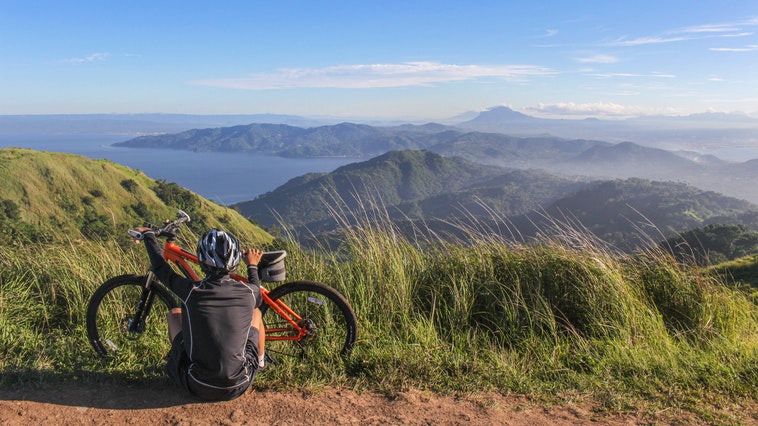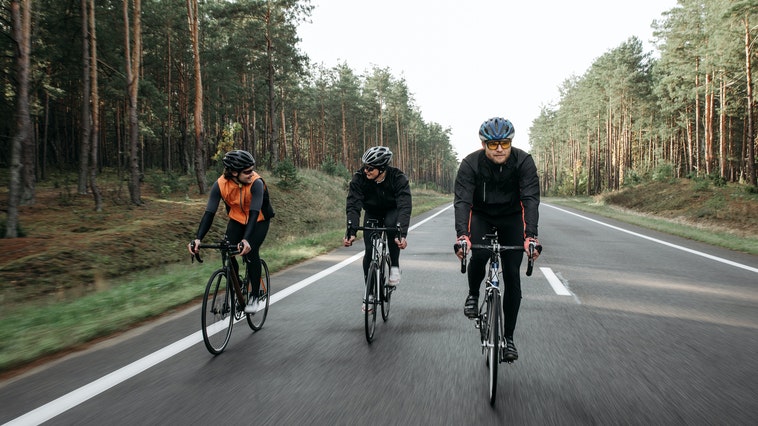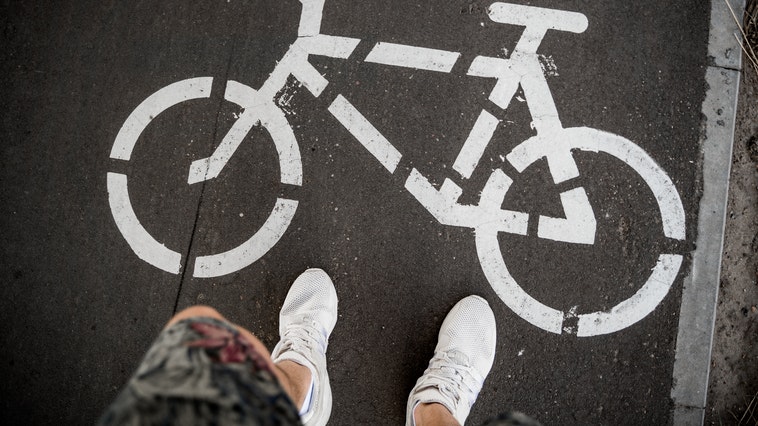Losing weight can be a huge challenge for many, especially not knowing what type of exercise will benefit them the most. Whether you’re just getting started or wanted to lose a few pounds, you can kick off your fitness journey with cycling. Cycling is a low-impact exercise that can burn between 400 and 750 calories per hour, depending on the rider’s weight, speed, and style of cycling. Keep reading as we revealed the seven ways that will help you losing weight by cycling.

Stay updated on your progress
Everybody has a different weight-loss goal, whether it’s to reach a certain weight, have a smaller waistline, or simply want a healthier body. But keep in mind that this journey will be full of ups and downs and you might want to keep track of your progress. By doing this, you can look back on your progress and stay motivated to keep going if you’re having a bad day.
It would be helpful to keep track of your riding as well. This allows you to keep track of how long you’ve been cycling for, which not only motivates you but also helps you plan your training. You’ll be able to see your fitness improve as you progress with apps like Strava or Map My Ride. The statistics and comparisons to previous rides will show you where you need to improve. What matters most is that you keep going.
Eat wisely
Don’t fall into the trap of overeating and destroying all your hard work because the diet is the most crucial factor in weight loss. It can be quite challenging because exercising increases your appetite and makes you want to eat more. However, remember that weight loss is based on a calorie deficit. So, eat small portions of healthy food every three to four hours to help you maintain a steady metabolism and keep your energy levels stable.
Sugar and processed foods may provide a lot of energy, but they are nutritionally deficient. Concentrate on consuming nutrient-dense, satisfying foods. Fish, poultry, and beans are all good sources of lean protein. Along with them, eat plenty of fresh fruit and vegetables or simply consume multivitamins to make your life easier. Eating the right food can refuel you for recovery and get you to go out and cycling again.
Include interval training
Interval training involves replacing two or three of your usual rides with different intensities, or blend them by adding a high-intensity session at the end of a moderate ride if you feel up to it. For most of the session, you’ll need to be riding at 70 to 90% of your maximum heart rate.
The good news is that by doing this, you can increase your metabolic rate for the next 24-36 hours. Other than that, if you don’t want to do it outside or if the weather is terrible, cycling can be done indoors. With cycling apps like Rouvy, Zwift, and RGT Cycling, the whole experience become more realistic and enjoyable.
Get enough sleep
Getting the correct amount of sleep each night can reduce stress and encourage weight loss. Instead of staying up late and nibbling while watching late-night television, bike throughout the day to exhaust yourself, then go to bed early and get eight hours of sleep. Being well-rested makes it easier to get up in the morning and get your workout done before going to work, reducing the likelihood of skipping it.
A good night’s sleep is also necessary for the body to heal and grow muscle after each day so that you are ready for the next. If you sleep less than the hours recommended, you will gain weight despite your workout attempts. In fact, people who don’t get enough sleep at night are more likely to feel hungry and less likely to feel satisfied after eating.

Try fasted ride
Another advantage of cycling is that when you fast, you get to burn more fat. The idea behind this is that because your body’s usual supply of energy is low due to not having eaten recently, it is more likely to draw on its stored fuel stores, such as body fat, to use as energy while you exercise. Clinical evidence is varied, but it is undeniable that fasting training helps some people.
The ideal range for intermittent fasting is 12–16 hours. So, if you want to work out at 8 AM, you’ll need to avoid all food and beverages except water starting at 8 PM the night before. Other than that, it is recommended to do fasted riding for less than 2 hours to minimise bonking. After all, this isn’t something that everyone can do. Understandably, some rider needs to fuel themselves before exercising. But for others, it can be a powerful weight-loss technique.
Cycle over the hills
To make your fitness adventure more fun, include some hills in your riding route. This is beneficial to weight loss. Riding uphill is an excellent technique to get in shape faster because it is more difficult to get through. You’ll be more likely to be cycling to burn fat if you elevate your heart rate and put your muscles to work. The concept is straightforward: the steeper the gradient, the more difficult it becomes. Since we’re pedalling against gravity, our bodies have to work harder.
The steepness of the hill, the duration of riding, pace, wind resistance, and other factors all influence your calorie burn figure. Be it’s the bumpy road or a hill repetition workout, take the high road if you’re truly up for the challenge. Choose a difficult hill and ride it several times. If you can fit a few hills into your long route, do it.
Enjoy it
Last but not least, take pleasure in it! If your office is close to your home, try commuting by bike from Monday to Friday. Alternatively, incorporate intervals into the ride to make it more fun. You can also try cycling with other people. When you’re riding with other people, you’re more likely to push yourself harder and go faster. It’s also far more difficult to be quiet as well when you’re riding with others.
Cycling with like-minded folks who are on the same weight-loss journey especially will provide you with encouragement and advice. There’s plenty to enjoy whether you prefer going down the country lanes, ripping down mountain bike trails, or social rides with friends. All of this will make you almost forget that you’re exercising while doing it.


